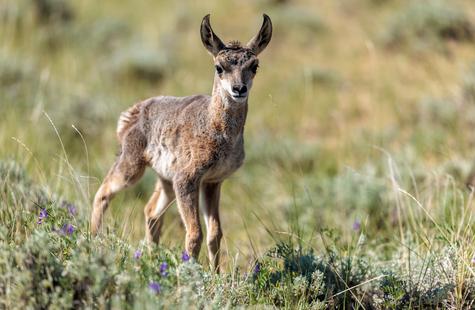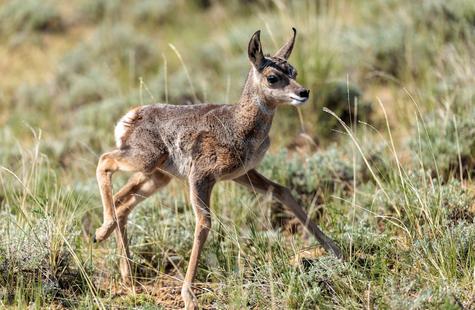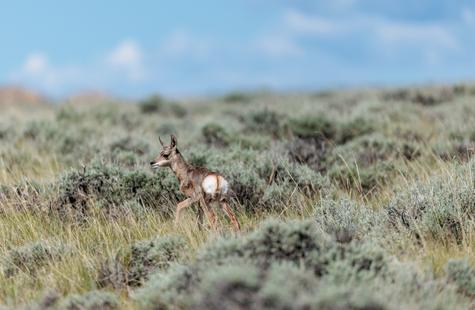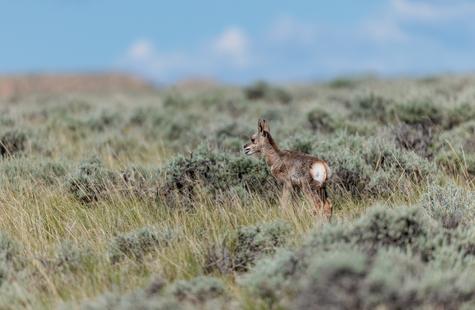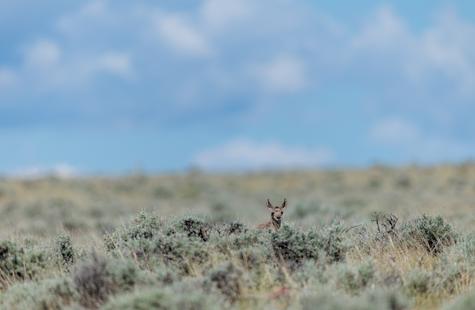I sometimes question myself when I'm taking random back roads into unknown territory. They can lead to dead ends, wasted time and other regrets. But, without them I would have missed out on oh-so-many gorgeous moments. I try to remind myself when I'm on a boring or seemingly unfruitful stretch that it just comes with the territory. Michael Jordan was quoted as saying "You miss every shot that you don't take", and I apply his words to a lot of things like this in my photography adventures.
I was on one of these spontaneous routes around McCullough Peaks HMA when I spotted a large raven up ahead. There had been no pronghorn, no horses and really nothing at all for several miles until this raven appeared. Its large size and jet black color stood out against the sage filled backdrop. He was right by the road and I didn't think much of it as I slowly approached on the bumpy high-clearance trail. The raven flew away only a moment before I reached it, and behold he was perched above something the whole time! A loud bahhh-bahhhh called out as I passed by something very small. The sound reminded me of a little baby bighorn lamb. I immediately stopped the car, and turned it off. The camera is always in the front seat in places like this, so I was very quick to get eyes on the animal.
It was a baby pronghorn (antelope)!!! I tried to compose myself and capture the moment as best I could. I was excited, concerned and also unsure of what lens would be best in this particular moment that might be gone in an instant. I snapped a few quick shots with my 300mm lens when it was right by the road. Then, it ran about 50 ft. away and paused. I decided to quickly swap lenses. My instinct about the fawn was that it was separated from its mother and that the large raven (nearly the same size) was waiting for an opportunity to strike. I was wrong about being orphaned or lost, as I learned after-the-fact when researching pronghorn fawn behavior.
Apparently, in the first 21-26 or so days in a fawns life, they are left completely alone and only spend 20-25 minutes per day with their mothers. After that, they are grouped into a nursery and eventually keep up with the adult group full time. This little baby was in that first stage, but at the time I didn't know that. With the raven lurking, my instinct was to get the baby to call out to its mother again. I knew that there had been no pronghorn for my entire approach, but in that moment I noticed a pronghorn female appear on a hill maybe a quarter mile away. I thought that this must be the mother and that she heard that first loud call from the fawn. I decided to flush the baby once more in hopes it would call out again and that they could reunite. In hindsight, I should have just stayed put for a moment and taken pictures of it laying down in the sage. I was more concerned about them reuniting, so I walked a bit closer until the fawn got up and called out once more. It ran towards the adult on the hill and I decided to drive away so that I would hopefully not interrupt anything further.
I wonder how many days old this little one was? It's pretty amazing that they are all alone like that for so long during their first three weeks. Getting a good, close-up, shot of a pronghorn has been on my list of goals, so it was really amazing to see one like this. I felt bad for disturbing the fawn at all, but it was literally only a few inches off of the road (albeit a very infrequently traveled one). My mistaken concern about being separated and in distress is another reminder for me to just watch on as an impartial observer. Great little moment.
